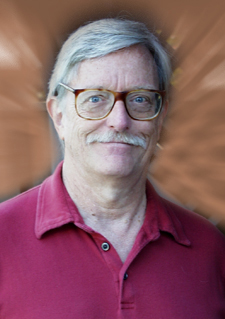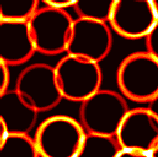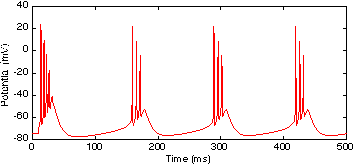Hugh R. Wilson

ORDCF Professor of Spatial and Computational Vision, York University
Departments of Biology, Psychology, Mathematics, and Computer Science
1985-2000: Professor, Ophthalmology & Visual Science, Neurobiology & Biopsychology, University of Chicago
Fellow, Optical Society of America
Research Interests with Selected Publications
Psychophysics of Form Vision (including fMRI) and Motion Perception

My experimental research in these areas is designed to elucidate the sequence of cortical processing stages involved in the analysis of visual form and motion. At present a main focus is to understand the various forms of global, configural orientation pooling occurring in cortical area V4 and contributing to the visual analysis of faces. Both our psychophysics and fMRI in this area employ synthetic faces (see above) that are derived from a data base of measurements on digitized photographs of many subjects. Synthetic faces can be manipulated in a multi-dimensional metric space to generate stimuli to test hypotheses about the transformations involved in form vision.
Kim, J. and Wilson, H. R. (1996) Direction repulsion between components in motion transparency. Vision Res. 36, 1177-1187.
Kim, J. and Wilson, H. R. (1997) Motion integration over space: Interaction of the center and surround motion. Vision Res. 37, 991-1005.
Wilson, H. R., Wilkinson, F. & Asaad, W. (1997) Concentric orientation summation in human form vision. Vision Res., 37, 2325-2330.
Wilkinson, F., Wilson, H. R. & Ellemberg, D. (1997) Lateral Interactions in Peripherally-Viewed Texture Arrays. J. Opt. Soc. Am. A, 14, 2057-2068.
Wilson, H. R. & Kim, J. (1998) Dynamics of a divisive gain control in human vision. Vision Res. In press.
Wilkinson, F., Wilson, H. R. & Habak, C. (1998) Detection and recognition of radial frequency patterns. Vision Res. In press.
Wilson, H. R. & Wilkinson, F. (1998) Detection of global structure in Glass patterns: implications for form vision. Vision Res. In press.
Wilson, H. R., Wilkinson, F., Lin, L. M., Castillo, M. (1999) Discrimination of head orientation. Vision Res. In press.
Wilkinson, F., James, T. W., Wilson, H. R., Menon, R., Gati, J. & Goodale, M. (1999)
Wilson, H. R., Wilkinson, F., Lin, L. M. and Castillo, M. (2000) Perception of head orientation. Vision Res. Vision Res. 40, 459-472.
Wilson, H. R., Loffler, G., Wilkinson, F. and Thistlethwaite, W. A. (2001) An inverse oblique effect in human vision. Vision Res. 41, 1749-1753.
Loffler, G. and Wilson, H. R. (2001) Detecting shape deformation of moving patterns. Vision Res. 41, 991-1006.
Wilson, H. R. & Wilkinson, F. (2002) Symmetry Perception: a novel approach for biological shapes. Vision Res. 42, 589-597.
Wilson, H. R. & Wilkinson, F. (2002) Global visual pattern extraction. In Handbook of Brain Theory & Neural Networks, ed. by M. A. Arbib, MIT Press: Cambridge, MA. In press.
Wilson, H. R. & Wilkinson, F. (2002) Spatial channels in vision & spatial pooling. In The Visual Neurosciences, ed. by L. M. Chalupa & J. S. Werner, MIT Press: Cambridge, MA. In press.
Dynamic Neural Network Models of Visual Function

My neural network models are designed to be consistent with the anatomy and single unit physiology of the visual system while predicting psychophysical data. Network models thus form the basis for relating physiology to function. Emphasis has been on modeling the retina and cortical areas MT and V4. Our current modeling is designed to examine hypotheses on the dynamical role of feedback between cortical areas V4, V2, and IT and its role in pattern recognition.
Wilson, H. R., Ferrera, V. P., and Yo, C. (1992) A psychophysically motivated model for two-dimensional motion perception. Visual Neurosci. Visual Neurosci. 9, 79-97.
Wilson, H. R. (1993) Theories of infant visual development. In Early Visual Development, Normal and Abnormal, ed. by K. Simmons, Oxford University Press, New York.
Wilson, H. R. and Kim, J. (1994) A model for motion coherence and transparency. Visual Neurosci. 11, 1205-1220.
Wilson, H. R. (1994) Models of two-dimensional motion perception. In Visual Detection of Motion, ed. by A. T. Smith & R. J. Snowden, Academic Press, London, 219-251.
Wilson, H. R. (1997) A neural model of foveal light adaptation and afterimage formation. Visual Neuroscience, 14, 403-423.
Wilson, H. R. (1998) Non-Fourier cortical processes in texture, form, and motion perception. In Cerebral Cortex, vol. 14: Models of Cortical Circuitry, ed. by P. S. Ulinski & E. G. Jones, Plenum, New York, In press.
Wilson, H. R., Krupa, B. & Wilkinson, F. (1999) Dynamics of a scintillating visual illusion. Submitted.
Wilson, H. R., Blake, R. & Lee, S.-H. (2001) Dynamics of travelling waves in visual perception. Nature, 412, 907-910.
Simplified Models of Cortical Neurons & Interactions

My purpose in simulating individual neurons and small neural networks has been to develop simplified mathematical descriptions that capture key elements of the underlying nonlinear dynamics. Such simplified descriptions can be very useful in larger network simulations. Current projects focus on interactions in primary visual cortex that may produce the visual auras in migraine.
Wilson, H. R. and Cowan, J. D. (1972) Excitatory and inhibitory interactions in localized populations of model neurons. Biophysical Journal, 12, 1-24.
Wilson, H. R. and Cowan, J. D. (1973) A mathematical theory of the functional dynamics of cortical and thalamic nervous tissue. Kybernetik, 13, 55-80.
Wilson, H. R. (1999) Simplified dynamics of human and mammalian neocortical neurons. J. Theoretical Biol. In revision.
Nonlinear Dynamics in Neuroscience
Wilson, H. R. (1999) Spikes, Decisions & Actions: Dynamical Foundations of Neuroscience, Oxford University Press, Oxford UK.
There is one central reason why all neuroscientists and biopsychologists should be conversant with nonlinear dynamics. Nonlinear dynamics reveals and elucidates a range of phenomena that are simply inconceivable in the more mundane world of linear systems theory. Memory and forgetting, decision making, motor control, action potentials, and perhaps even free will and determinism can no longer be intelligently conceptualized without a basic understanding of nonlinear systems. At the deepest level, therefore, my decision to write this book was predicated on the belief that an understanding of brain function and behavior must be grounded in a conceptual framework informed by nonlinear dynamics.
The book is accompanied by a disk containing about 100 MatLab™ scripts that are intended to complement the text MatLab was chosen because the scripts will run on the Macintosh, UNIX, or Windows platforms.
Downloads
- Adobe Acrobat version of the complete book.
- Most recent list of corrections.
- The supplemental Matlab Scripts (Zipped within Chapter Divisions).
For more information and to order:
Email: hrwilson@yorku.ca
Phone: (416) 736-2100 ext. 33140
Address:
Hugh R. Wilson
ORDCF Professor of Biological & Computational Vision
York University
Computer Science Building B002F
4700 Keele Street
Toronto, Ontario
Canada M3J 1P3

